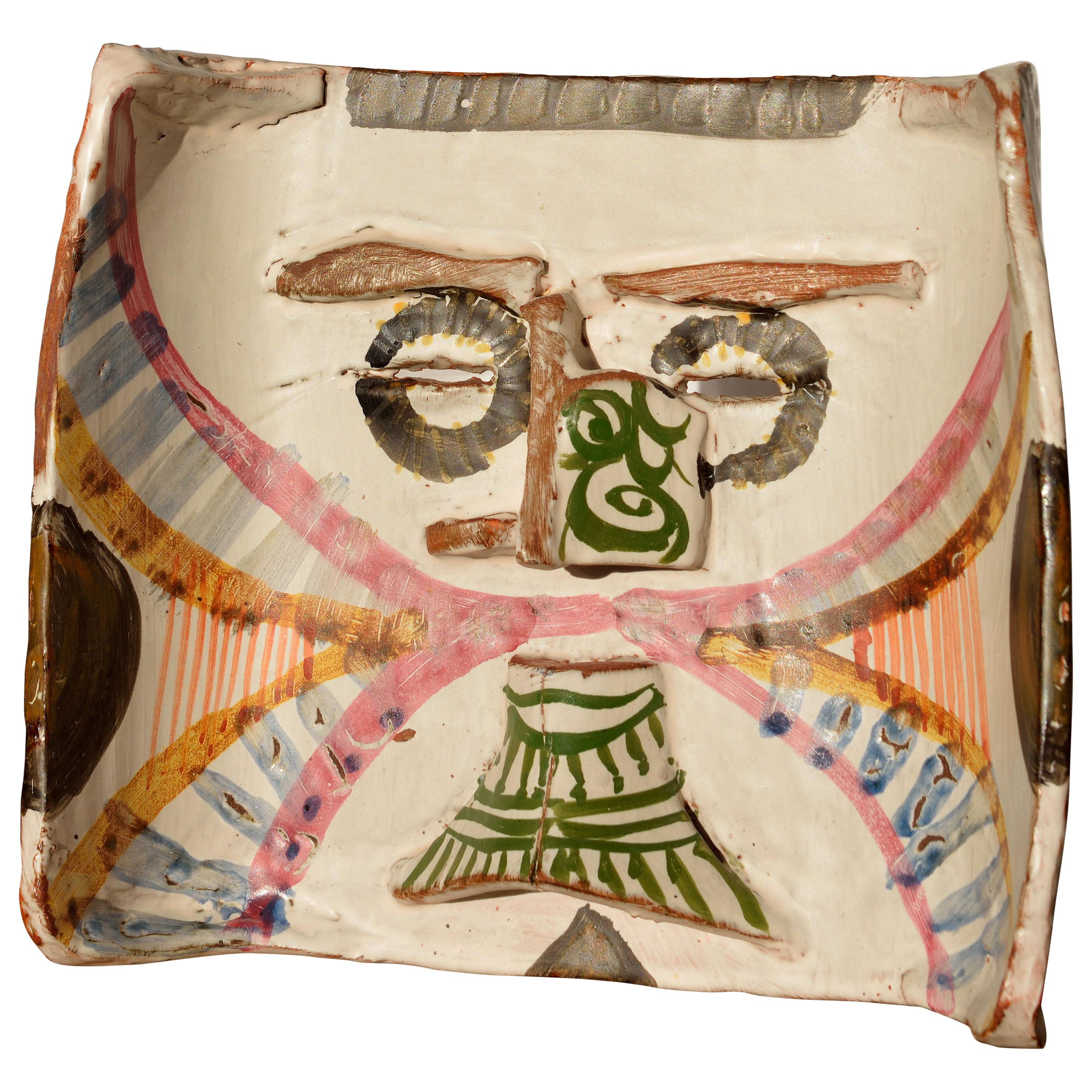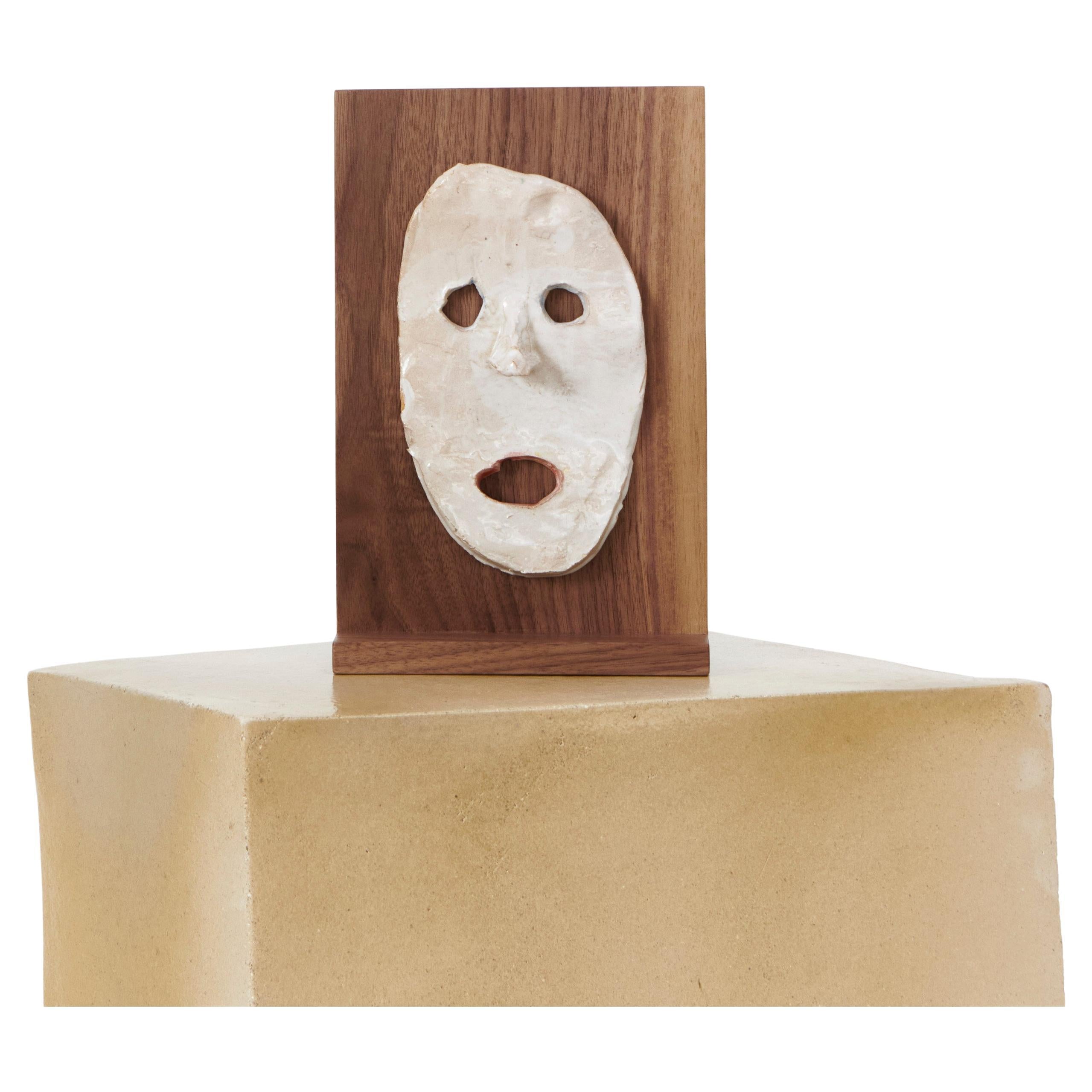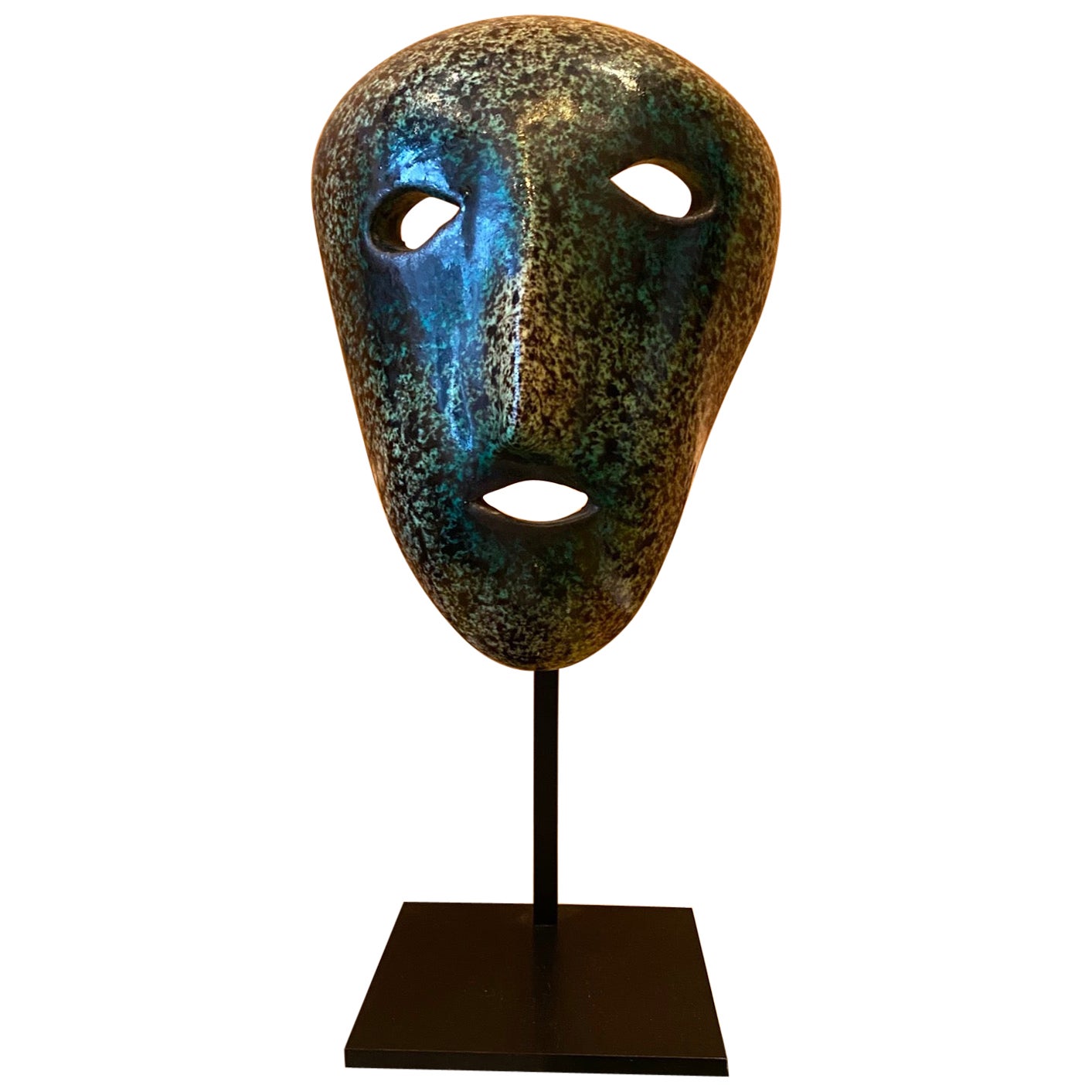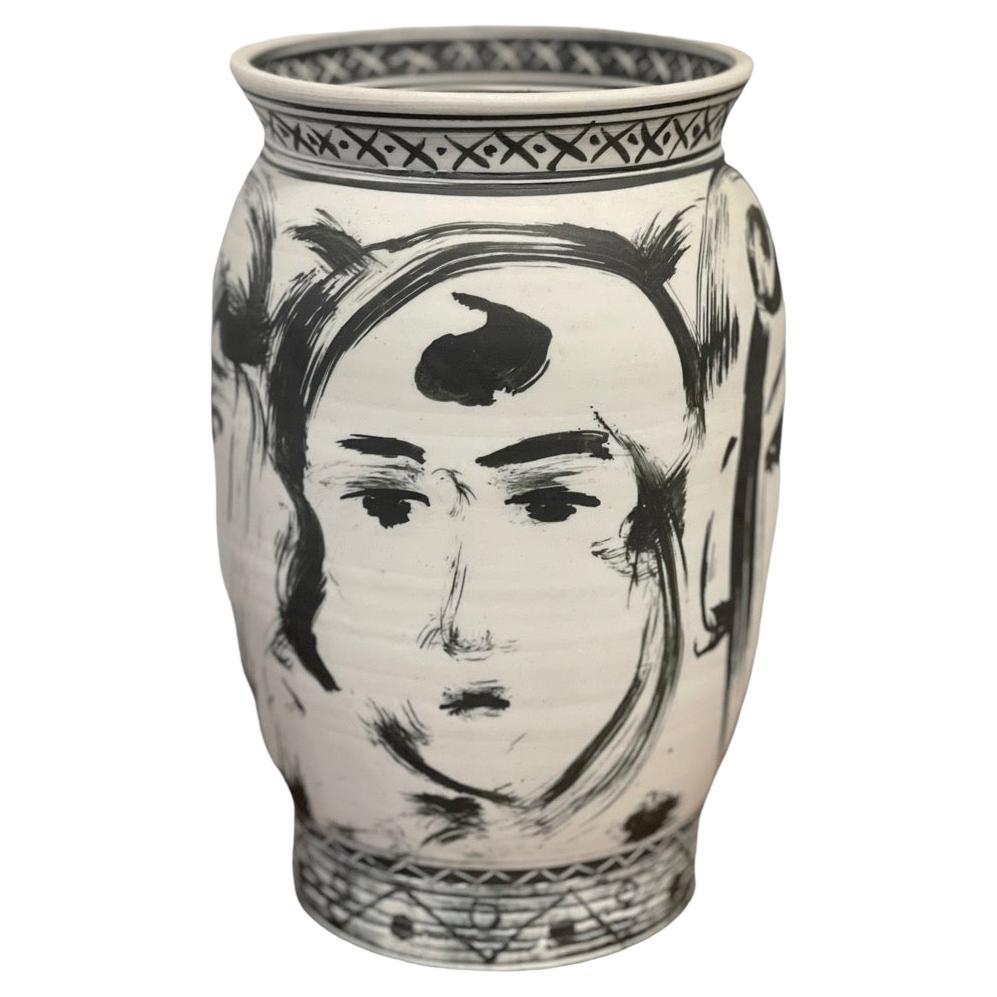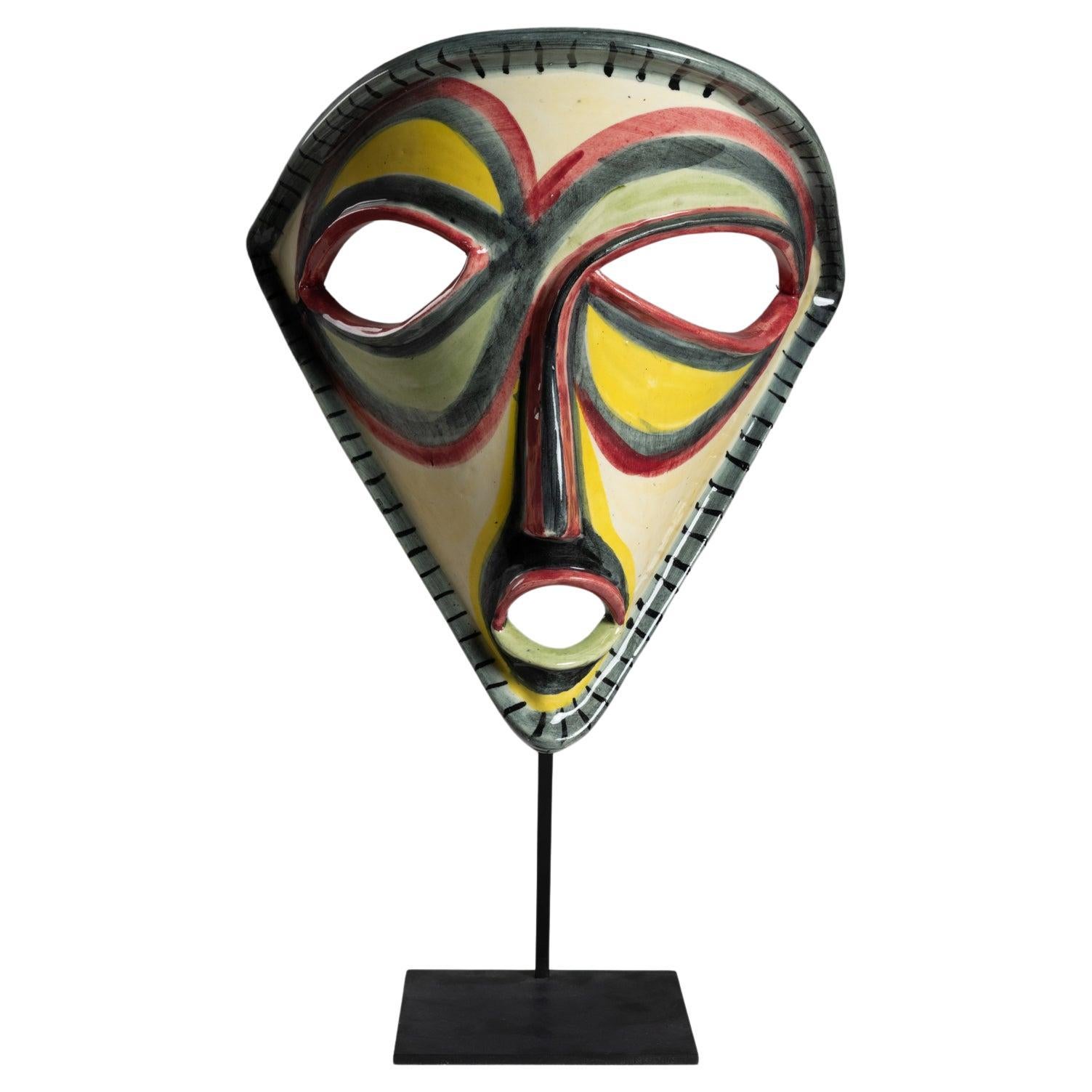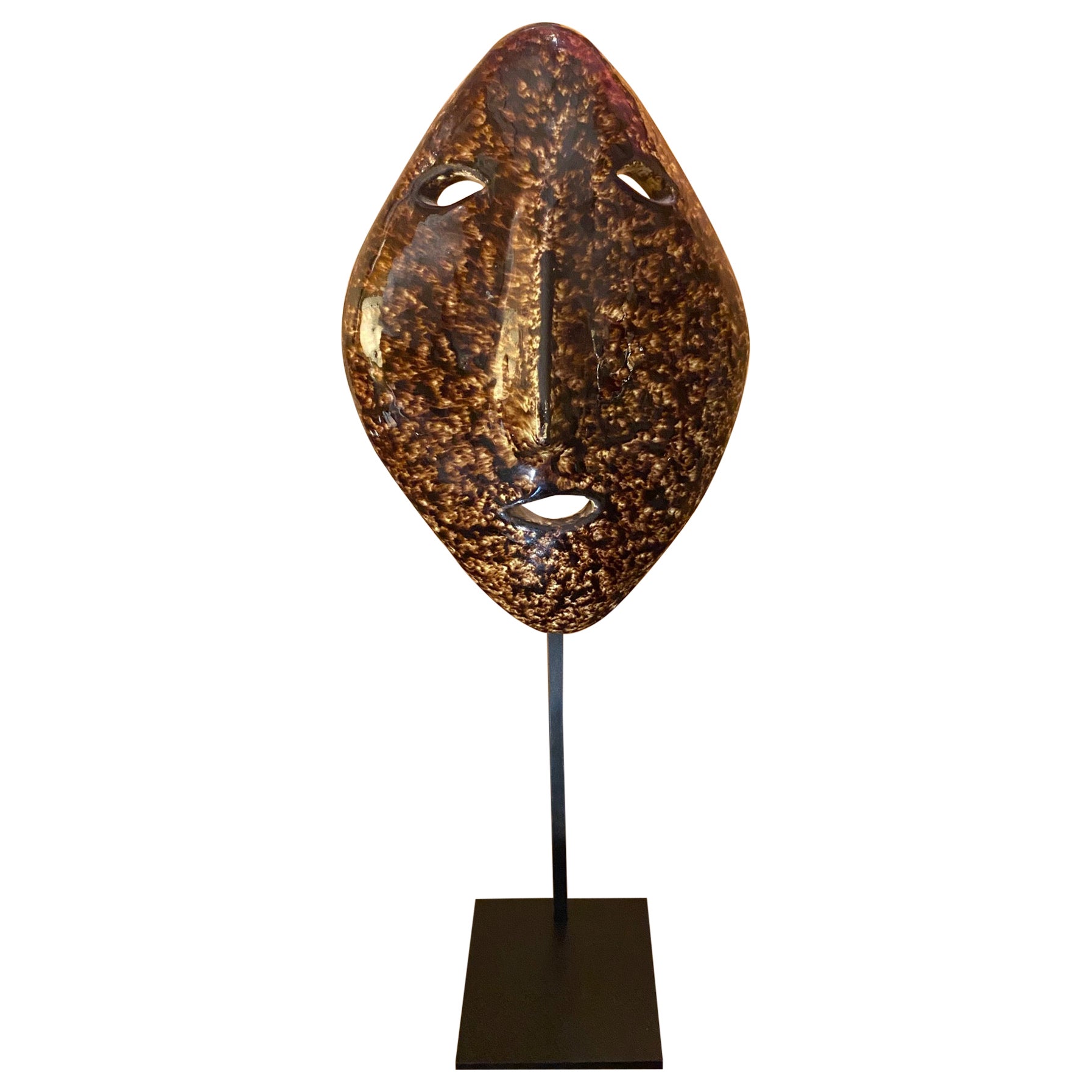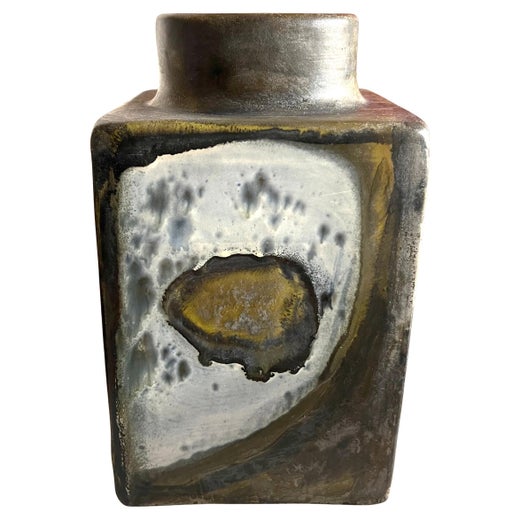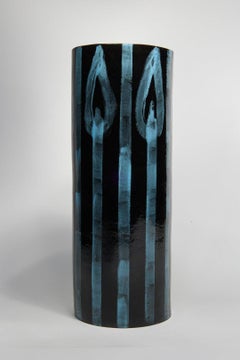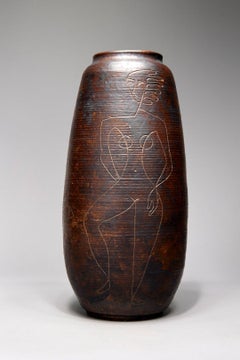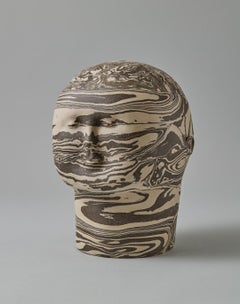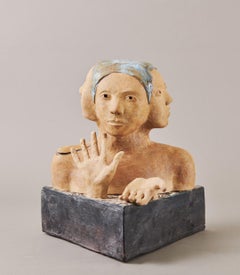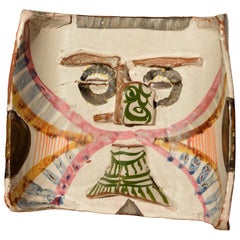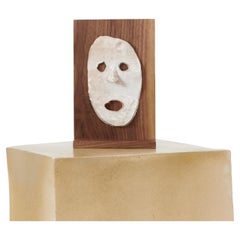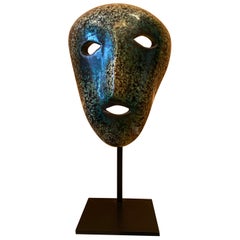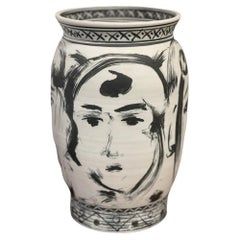Items Similar to Faces Vase, 20th Century Ceramic Drama Masks, Italian Artist
Want more images or videos?
Request additional images or videos from the seller
1 of 7
Marcello FantoniFaces Vase, 20th Century Ceramic Drama Masks, Italian Artist
$3,000
£2,293.66
€2,641.83
CA$4,203.92
A$4,693.28
CHF 2,459.21
MX$57,450.37
NOK 31,231.98
SEK 29,447.79
DKK 19,716.27
Shipping
Retrieving quote...The 1stDibs Promise:
Authenticity Guarantee,
Money-Back Guarantee,
24-Hour Cancellation
About the Item
Marcello Fantoni (Italian, 1915-2011)
Faces Vase
Ceramic
Signed on bottom
10.5 x 5.5 x 6 inches
Marcello Fantoni was an Italian sculptor, ceramicist, metalworker, multi-media artist and designer.
Born in Florence in 1915, Marcello Fantoni began studying ceramic art at age 12 at the Art Institute of Florence with ceramicist Carlo Guerrini, artistic director of the famed Cantagalli Factory. He continued years of training in ceramics and the arts, including sculpture with Libero Andreotti and Bruno Innocenti, and figurative art with Gianni Vagnetti, graduating as a maestro of art in 1934. After a stint as art director for a ceramics factory in Perugia, in 1936 he opened the Fantoni Ceramic Studio in Florence. Here he produced ceramic series as well as unique pieces, sculptures and furnishings. In 1937 Fantoni’s pieces were exhibited in the Florence National Arts and Crafts Exhibit where their unique combination of rustic forms decorated with African and marine motifs and painted figures garnered considerable acclaim. By the start of World War II Fantoni’s melding of ancient Italian pottery techniques with decidedly Modernist elements had won him artistic and commercial success both in Italy and abroad.
Having participated in the resistance, after the War Fantoni worked for the 500-year old Maiolica factory in Deruta, Umbria, renowned for its signature tin-glazed pottery. In the 1950s he refocused on his Florence studio, dedicating himself to larger sculptural pieces and working on many collaborations. He also expanded his experimenting with materials, forms, drawing from varied influences – Primitivism, Novecento style, Cubism and Abstract Expressionism. Fantoni gave special emphasis to ancient Etruscan ceramic techniques, glazes and colors, heightening the timeless appeal of his pieces. As well as clay, he also worked in metals to great effect. Whether created as a series or as a unique piece, every Fantoni piece was ultimately rendered unique by his hand-painting it. The extraordinary diversity of shapes and textures notwithstanding, one the most identifiable qualities of his creations was his painting style. Through the 50s and 60s he made many cubist-inspired vases and ewers painted in colors bordered by sgraffito lines scratched through the paint in a manner evoking Picasso and Braque. Along with figurative and abstract works, the 60s also saw Fantoni creating brutalist pieces with edgy, angular shapes, while in later life, his work took a minimalist turn.
In 1970 Fantoni founded the International School of Ceramic Art, dedicated to teaching ceramic arts and experimentation. (Many of his students and employees would go on to become noteworthy artisans and artists in their own right.) Maintaining great versatility throughout his career, Fantoni completed projects for public and private buildings, churches, schools, theaters, cinemas, and ships. His works, meanwhile, were collected by important museums worldwide. When Marcello Fantoni died in Florence in 2011 at the age of 95, his obituary in the Italian newspaper La Nazione hailed him “The master of beauty.”
Museums and Exhibitions
MoMA New York, Metropolitan Museum of Art of New York, Brooklyn Museum, Museum of Fine Art of Boston, Victoria and Albert Museum of London, Royal Scottish Museum of Edinburg, Museums of Modern Art of Tokyo and Kyoto, International Museum of Ceramics in Faenza, National Bargello Museum and Gabinetto Disegni e Stampe of the Uffizi in Florence.
“Materia e colore, l’arte di Marcello Fantoni”, Loggia della Limonaia di Palazzo Medici Riccardi di Firenze, 2015
"Marcello Fantoni, A Beautiful Form with Beautiful Color", Archaeological Museum of Fiesole, 2005
"Ceramics as Art, Marcello Fantoni Ceramist and Sculptor", Salone delle Regie Poste, Florence, 2000
Publications
Marcello Fantoni: Ceramista in Firenze Dal 1929 by Antonio Paolucci, Edizioni della Bezuga, 1999
Marcello Fantoni, Ceramica come Arte, Published by Octavo, 2000
Marcello Fantoni Mostra al Museo Archeologico di Fiesole, 2005
- Creator:Marcello Fantoni (1915 - 2011, Italian)
- Dimensions:Height: 10.5 in (26.67 cm)Width: 5.5 in (13.97 cm)Depth: 6 in (15.24 cm)
- Medium:
- Period:
- Condition:
- Gallery Location:Beachwood, OH
- Reference Number:1stDibs: LU1768215648092
Marcello Fantoni
Marcello Fantoni was a Florentine artist who specialized in ceramics. He studied at the Art Institute in Florence, where Libero Andreotti and Bruno Innocenti were his sculpting professors and Gianni Vagnetti was his figurative art professor. Fantoni began to work as a ceramist in 1934, opening his factory in 1936. After the Second World War, he became very successful, and his works are held in some of the world's most important museums (from the USA to Japan).
About the Seller
5.0
Vetted Professional Seller
Every seller passes strict standards for authenticity and reliability
Established in 1975
1stDibs seller since 2022
34 sales on 1stDibs
Typical response time: 1 hour
- ShippingRetrieving quote...Shipping from: Beachwood, OH
- Return Policy
Authenticity Guarantee
In the unlikely event there’s an issue with an item’s authenticity, contact us within 1 year for a full refund. DetailsMoney-Back Guarantee
If your item is not as described, is damaged in transit, or does not arrive, contact us within 7 days for a full refund. Details24-Hour Cancellation
You have a 24-hour grace period in which to reconsider your purchase, with no questions asked.Vetted Professional Sellers
Our world-class sellers must adhere to strict standards for service and quality, maintaining the integrity of our listings.Price-Match Guarantee
If you find that a seller listed the same item for a lower price elsewhere, we’ll match it.Trusted Global Delivery
Our best-in-class carrier network provides specialized shipping options worldwide, including custom delivery.More From This Seller
View AllLarge 20th Century Ceramic Vase w/ Flowers, French Artist
By Roger Capron
Located in Beachwood, OH
Roger Capron (French, 1922-2006)
Vase
Ceramic
Signed on bottom
15.75 x 6 inches
French ceramist Roger Capron was born in Vincennes in 1922. He studied at Paris’s School of Applied A...
Category
Late 20th Century More Art
Materials
Ceramic
Jacobson (20th Century) - Mid-Century Ceramic Portrait Vase
Located in Beachwood, OH
Jacobson (20th Century)
Portrait Vase, 1949
Ceramic
Signed and dated on bottom
13 x 6 x 6 inches
Category
1940s More Art
Materials
Ceramic
Maybe She's Not a Straight On Type of Girl, Marbled Ceramic Head, 21st Century
Located in Beachwood, OH
Kristen Newell (American, b. 1989)
Maybe She's Not a Straight On Type of Gal, 2022
Stoneware and porcelain
Signed and dated on bottom
12 x 9 x 9 inches
Kristen Newell was born in a small town on the coast of Massachusetts, where from a very early age, she demonstrated a strong propensity for the arts. Important additional inspiration came from her family and from the family of a childhood friend, where Kristen found herself surrounded by the work of Paul Manship, her friend’s grandfather and one of America’s greatest sculptors.
With increased focus on her art, along with winning numerous awards throughout high school, Newell eagerly enrolled in the arts program at University of Vermont and augmented her studies with a valuable year at the Cleveland Institute of Art.
Upon graduation, Newell moved back to Cleveland to begin her art career and started participating in group shows, including River Gallery and the Ohio State...
Category
2010s Contemporary Figurative Sculptures
Materials
Porcelain, Stoneware
Four Three Two One, 21st Century Contemporary Surrealist Ceramic Sculpture
Located in Beachwood, OH
Kristen Newell (American, b. 1989)
Four Three Two One, 2015
Stoneware, porcelain and acrylic
Signed and dated on bottom
16 x 15 x 14 inches
Kristen Newell was born in a small town on the coast of Massachusetts, where from a very early age, she demonstrated a strong propensity for the arts. Important additional inspiration came from her family and from the family of a childhood friend, where Kristen found herself surrounded by the work of Paul Manship, her friend’s grandfather and one of America’s greatest sculptors.
With increased focus on her art, along with winning numerous awards throughout high school, Newell eagerly enrolled in the arts program at University of Vermont and augmented her studies with a valuable year at the Cleveland Institute of Art.
Upon graduation, Newell moved back to Cleveland to begin her art career and started participating in group shows, including River Gallery and the Ohio State...
Category
2010s Contemporary Figurative Sculptures
Materials
Porcelain, Stoneware, Acrylic
Bust of Josephine Baker, Mid-Century Ceramic Female Face
By Vally Wieselthier
Located in Beachwood, OH
Attributed to Vally Wieselthier (Austrian-American, 1895-1945)
Bust of Josephine Baker, c. 1930
Ceramic
Stamped on base
11.5 x 5.5 x 5.5 inches
Vally Wieselthier (1895 Vienna--1945 ...
Category
1930s Figurative Sculptures
Materials
Ceramic
Early 20th Century Ceramic Bust of a Woman, Cleveland School Artist
Located in Beachwood, OH
Edris Eckhardt (American, 1905-1998)
Bust, 1933
Ceramic
Signed and dated base
8.5 x 4.5 x 4.5 inches, including base
Born in Cleveland, Ohio January 28, 1905, Edris was given the na...
Category
1930s Figurative Sculptures
Materials
Ceramic
You May Also Like
Ceramic Mask by Gilbert Portanier, 1979
By Gilbert Portanier
Located in Saint-Ouen, FR
Gilbert Portanier, mask
France, Vallauris, 1979.
Signed
Unique piece
Enameled ceramic mask with a polychrome decoration.
Nose, arches and beard in relief and two slits to crea...
Category
20th Century French Beaux Arts Masks
Materials
Ceramic
Countenance or Cara Ceramic mask by Tom R Porter
By Tom Porter
Located in Macieira de Sarnes, PT
Ceramic mask on walnut frame, Tom R PORTER, London.
Walnut frame 26.5 x W17 cm
Ceramic Mask H19.5 x W11.5 cm
From the series Countenance or Cara, presented in 2024 at 'ROSTOS' in M...
Category
2010s Portuguese Modern Abstract Sculptures
Materials
Ceramic, Walnut
Ceramic Mask, Accolay, France, 1960s
By Accolay Pottery
Located in Paris, FR
Ceramic Mask, Accolay, France, 1960s
Accolay was a pottery center in France, north of Burgundy, founded amongst others, by 4 students of Alexandre Kostanda. Active between 1945 and ...
Category
Vintage 1960s French Masks
Materials
Ceramic
Edward Eberle Four Faces '1993', Porcelain with Terra Sigillata Vase, Signed
By Edward Eberle
Located in North Miami, FL
Four Faces (1993) - Porcelain and terra sigillata vase, signed, titled and dated on bottom, by artist Edward Eberle, (American/Western PA, born 1944).
Category
20th Century American Vases
Materials
Porcelain, Paint
Ceramic mask by Accolay
By Accolay Pottery
Located in Saint-Ouen, FR
Striking glazed ceramic mask created by the renowned Accolay ceramic workshop, France, circa 1960. Measuring 49.5 cm in height and 32 cm in width, this sculptural piece exemplifies t...
Category
Mid-20th Century French Mid-Century Modern Figurative Sculptures
Materials
Ceramic
$10,042
Ceramic Mask, Accolay, France, 1960s
By Accolay Pottery
Located in Paris, FR
Ceramic Mask, Accolay, France, 1960s
Accolay was a pottery center in France, north of Burgundy, founded amongst others, by 4 students of Alexandre Kostanda. Active between 1945 and ...
Category
Vintage 1960s French Masks
Materials
Ceramic
